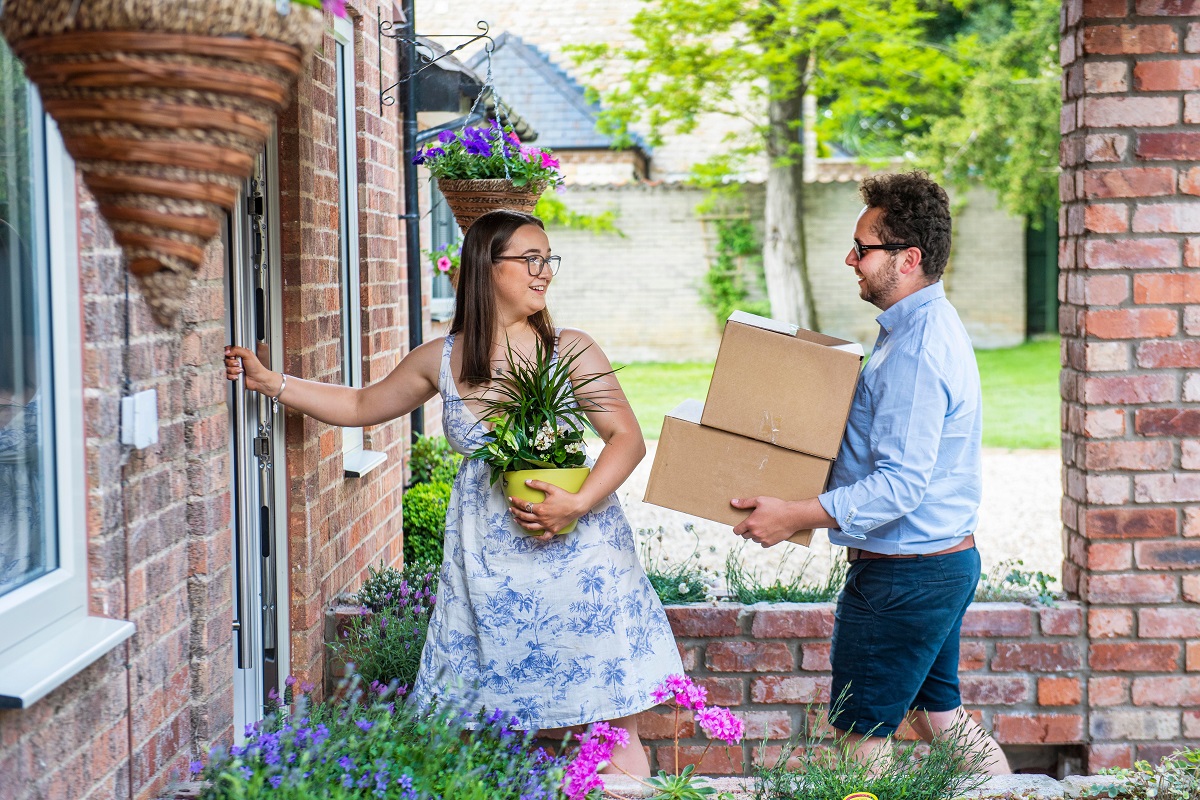For many buyers, moving into a new build home will present them with a blank canvas. Clean walls where they can make their own mark, brushing each room with personality. But, for others, it won’t just be the house itself that offers up the chance of a fresh start. The garden too will be the source of much excitement. Especially as we are into a new season.
Officially beginning on March 26th, British springtime brings with it the promise of warmer, longer days, flowering daffodils and tulips, and the perfect opportunity for more time digging in the garden. Whether you’re hoping to grow your own with vegetable patches, add some colour with cleverly planned borders, or get wild and let nature show you the way to create a haven for wildlife, spring is the time to do it.
Dig for veggie victory

Contrary to popular belief, spring is a great time to get some beds ready to grow our own veg. There’s nothing quite like picking your own produce ready for a lunch al fresco when the sun is shining, and now is a fantastic time to put the work in to ensure you have an abundance of veg to choose from.
To be best prepared for the year of growth to come, early spring is an ideal time to get your beds ship-shape. Removing any stray weeds and fluffing up the soil checking it isn’t compacted – to allow for roots to spread once again – is the great starting point. Spring is also the time to work cover crops into your soil, adding nutrients ready to boost young plants. If you’ve already put raised beds in, top them off with new soil, blending it with your existing soil.
Next – it’s time for an important decision – what do you want to grow? You may need to look at adding specific fertiliser depending on the varieties you’re sowing – tomatoes for example like a bit of a calcium boost. If you’re seeding directly into beds avoid adding mulch – but if you’re germinating seeds and transplanting once they’re established, mulch once you’ve prepped your soil.
To access a wealth of gardening expertise – as well as some handy Get Set Grow videos – head on over to The RHS. For an incredibly accessible way to start growing your own look to containers. From carrots to beetroot, herbs, chard, and salads – you don’t need a lot of space to get growing.
Focus on florals

We all know that the snowdrops mark the first signs of spring, but there are plenty of other blooms to look at as we count down from spring to summer. From the sunshine yellow of daffodils and primroses to the gorgeous and very spring-appropriate pastels you can scatter with hellebores and hyacinth, there are so many easy wins when it comes to adding colour to your garden.
For novice gardeners looking to introduce colour into the garden for the first time, you can be confident with perennials. Surviving for multiple seasons rather than just one – like annuals – perennials regrow every season with floral displays increasing year-on-year.
A no-fuss way to introduce colour and shape to a garden, if you have a blank canvas look to perennials first to create the foundations of a stunning, bright, and beautiful garden. Easy to grow and care for, they cover space well, offer great value for money, and once established can be split, creating ‘new’ plants for you to add to the garden – be sure to do this in late autumn or early spring though when your perennials are dormant. Otherwise, keep them well-watered in dry spells and not over-water during wetter weather and they will serve you well for years to come.
Walk on the wild side

Rewilding and letting gardens go back to their roots is fast becoming the ‘done’ thing in our flourishing sustainable world. Once frowned upon by ‘the neighbours’, the world has moved on, and making your garden a haven for wildlife is one way you can make sure you’re being more eco-friendly. Supporting bees and butterflies, and a whole micro-world of bugs and beetles as well as our wider biodiversity, wildflower meadows are easy to introduce at home. You technically don’t even need a garden, with wildflower plugs allowing you to grow meadow pots too.
Of course, with a new Lindum Home, our gardens are part and parcel of the appeal, so whether you look to take over your whole lawn, section off a portion to become wild, get creative with some borders, window boxes, or raised beds – your meadow area will provide a perennial home for wildlife year after year, with the bonus of brightening up your garden too. Wildflowers thrive in open, sunny areas, so if you are a little more shaded opt for woodland wildflowers instead who are quite happy in the shade. The best part? Wildflowers are really low maintenance; they don’t even need good quality soil so you can steer clear of fertilisers as they’ll just help grasses to out-grow your beautiful blossoms.
It’s quite easy to create your wild area, simply clear the ground of any existing vegetation you don’t want to keep, to create bare soil where you can sow. Opt for local or UK native seeds at the very least and use 3-5g of seed per square metre, depending on the variety you go for – according to local Lincolnshire experts Landlife Wildflowers.
Sowing in the spring or autumn is recommended by Landlife Flowers, either way your first full meadow will come through the following summer. A few don’ts.
- Wildflowers will not survive in areas where they need to compete so you may need to spend some time clearing the ground of weeds before sowing.
- Don’t sow in problem areas or heavy shade.
- Take care not to bury your wildflower seed – it needs light, water, and warmth to grow.
- It can be tricky to sow – Landlife Wildflowers recommends using a carrier like sand or bran to make the job a little easier.
And that’s it. Keep seeds well-watered in the early stages and be patient. Your seeds will lie in the soil until the conditions are perfect for them to germinate, some may even need a frost to break dormancy.
We’re proud to offer great homes in great locations throughout Lincolnshire. With over 50 years of experience as one of Lincolnshire’s leading house builders, you can be safe in the knowledge that we’ll go the extra mile to find you your perfect home.
View our locations and buyer schemes to make the first steps to finding your new home.



